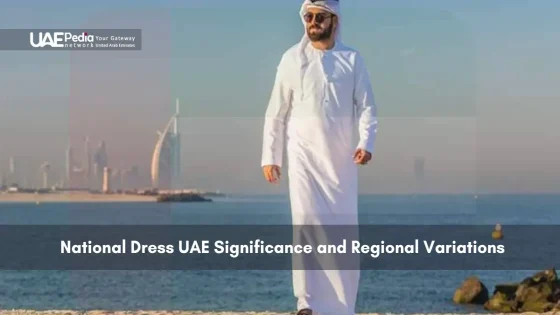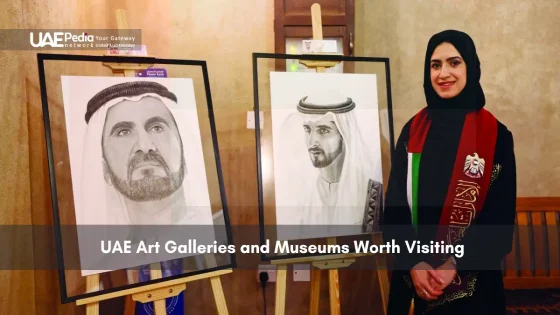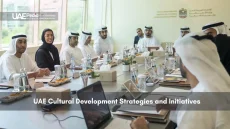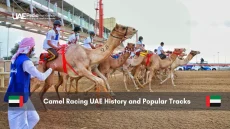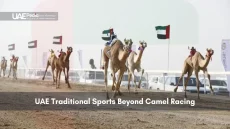What if I told you a 2,000-year-old tradition now fuels high-stakes competitions with birds soaring at highway speeds? This isn’t folklore—it’s the living legacy of falconry in the Emirates, where heritage takes flight in ways that’ll leave you breathless.
Generations have honed this art, blending patience and precision. At places like Abu Dhabi’s Falcon Hospital, ancient hand signals meet GPS trackers—proof that respect for tradition fuels innovation. The bond between handler and bird isn’t just functional; it’s built on years of trust, with rewards as simple as a feather-light touch.
Today, this practice thrives as both cultural emblem and adrenaline-packed sport. Local competitions draw crowds eager to witness aerial agility tests that would humble most drones. Yet beneath the spectacle lies a deeper truth: these birds aren’t pets or tools, but partners in a dance perfected over millennia.
- Ancient meets modern: Discover how time-honored techniques coexist with cutting-edge training
- Trust as tradition: Learn why gentle handling defines the falconer-bird relationship
- Sky-high stakes: Explore how heritage evolves into thrilling public events
The Rich History and Cultural Significance of Falconry
Imagine mastering a skill so vital that your ancestors’ meals depended on it. That’s how this story begins—with desert dwellers coaxing feathers and focus into a lifeline. Long before stadium crowds cheered, these birds were partners in survival, their flights determining whether families ate.
Sand, Strategy, and Sky
Early handlers dug shallow pits, hiding beneath ghaf tree branches with pigeon decoys. When a falcon dove, they’d grab its jesses—a heart-pounding dance of hunger and hope. Bedouin elders passed down tricks like training chicks with camel-hair hoods, creating bonds stronger than the midday sun.
“We didn’t tame the falcon—we learned its language,” wrote Sheikh Zayed, capturing the essence of this partnership.
From Necessity to National Treasure
As oases grew into cities, the practice shifted. Breeding programs refined speed and stamina, while competitions replaced hunting trips. Yet modern arenas still echo ancient rhythms: trainers use leather gloves from centuries-old designs, and reward systems mirror desert-era trust-building.
Today’s festivals? They’re living museums. You’ll spot teens filming saker falcons with drones while grandparents nod approvingly—proof that respect for heritage soars as high as the birds themselves.
Falconry UAE: Tradition Meets Modern Competition
Ever wondered how centuries-old practices coexist with drones and GPS? Step into a modern falconer’s world, where leather gloves meet touchscreen trackers in a seamless blend of grit and innovation.
Training Methods and Modern Equipment
New handlers start with feather-tethered decoys—just like their ancestors did. But today’s drills get a tech boost: GPS beacons map flight patterns, while lightweight cameras stream live feeds to trainers’ tablets. One club instructor puts it best: “We still use pigeons for live hunts, but now we analyze every dive frame-by-frame.”
| Technique | Traditional Approach | Modern Innovation |
|---|---|---|
| Training Tools | Goat-hair lures | Remote-controlled drones |
| Communication | Whistle commands | GPS vibration signals |
| Tracking | Visual markers | Satellite telemetry |
| Rewards | Hand-fed quail meat | Temperature-controlled feed schedules |
The magic happens in desert training camps at dawn. You’ll hear the whoosh of wings as birds streak toward decoys, trainers murmuring encouragement. Bond-building remains low-tech—hours spent hood-training young falcons builds trust no app can replicate.
Visitors often gasp when seeing a 300kph dive interrupted by a gentle fist perch. It’s this dance—ancient rhythms amplified by science—that keeps the sport soaring. Want the full experience? Time your visit during cooler months when training intensifies under golden-hour skies.
Exploring the Falconry Experience in the UAE
Picture this: golden dunes stretching to the horizon as a saker falcon arcs overhead, its shadow racing across the sand. This isn’t a screensaver—it’s your front-row seat to desert adventures where ancient practices meet hands-on discovery.
Desert Safari Adventures and Real-Life Encounters
Guided tours let you feel the rush of a falcon’s dive inches from your face. Trainers demonstrate bal-chatri traps made from palm fibers—centuries-old designs still used today. You’ll cheer as birds streak toward GPS-tracked lures, their 200kph dives kicking up sand clouds.
Evening safaris offer magic moments. As the sun dips, handlers share mint tea while peregrines perch on your gloved arm. “Their grip feels like living history,” one visitor whispered, capturing the mix of awe and connection these encounters spark.
The Abu Dhabi Falcon Hospital: A Hub of Innovation and Heritage
Step into the world’s largest avian care center, where x-ray rooms neighbor traditional feather repair studios. This facility treats over 11,000 birds yearly while preserving Bedouin healing methods. During tours, you’ll watch veterinarians perform laser surgeries—then see trainees hand-stitch leather hoods using ancestral patterns.
| Aspect | Traditional Practice | Modern Innovation |
|---|---|---|
| Medical Care | Herbal poultices | Digital blood analysis |
| Feather Repair | Hand-cut quill inserts | 3D-printed implants |
| Education | Oral storytelling | Interactive hologram displays |
The hospital’s museum reveals falconry’s societal role through rare artifacts. Don’t miss the breeding program exhibit—it shows how genetic research safeguards species while honoring their desert legacy. As one guide notes: “We’re not just healing birds. We’re keeping stories alive.”
Sustainable Practices and Community Impact in Falconry
You’d never guess that desert survival tactics now power eco-friendly initiatives saving species across continents. Modern conservationists blend ancestral wisdom with DNA mapping, creating blueprints that protect both birds and their ecosystems.
Conservation Initiatives and Breeding Programs
Abu Dhabi’s breeding centers mirror nature’s rhythms. Teams track prey populations using satellite collars, adjusting release schedules to match wild hunting patterns. “We’re not just raising birds—we’re rebuilding food chains,” explains a biologist at the region’s largest facility.
Traditional breeding methods get smart upgrades. Artificial insemination preserves rare bloodlines while honoring selective pairing practices from Bedouin eras. The result? Healthier chicks and stabilized wild populations—proof that innovation strengthens heritage.
Heritage Events and the Legacy of Leaders like Sheikh Zayed
Annual festivals turn conservation into celebration. Families cheer at bird-releasing ceremonies while kids craft leather jesses at workshops. These events echo Sheikh Zayed’s vision: “A nation without its past is like a tree without roots.”
Want to help? Visit rehabilitation centers or join citizen science projects tracking migration routes. Even snapping photos of wild falcons aids researchers—turning every enthusiast into a guardian of this living sport.
Final Reflections on the Enduring Legacy of Falconry
Picture a practice where every swoop writes history. Recognized by UNESCO as intangible cultural heritage, this desert-born art thrives through generations. Modern falconers still train with dawn’s first light, their gloves worn smooth like ancient dunes—yet now share techniques globally through livestreamed workshops.
Sheikh Zayed’s vision echoes today: “A people’s soul lives through its traditions.” From tracking prey across sands to satellite-monitored conservation flights, the sport balances primal instincts with innovation. Abu Dhabi’s festivals prove this daily—grandparents teach teens to stitch leather jesses while drones film falcons mid-dive.
What keeps it alive? Community. Sustainability. Passion. Breeders safeguard species using DNA databases, while clubs host desert cleanups to protect hunting grounds. As one trainer told me: “We’re not just handlers—we’re storytellers guarding a language older than nations.”
Ready to join the legacy? Visit rehabilitation centers, cheer at competitions, or simply watch a falcon’s shadow race across red sands. This isn’t just sport—it’s humanity’s oldest pact with the skies, rewritten daily by those who dare to look up.
Falconry’s roots stretch back over 4,000 years here—it began as a survival tool for Bedouin tribes hunting desert prey. Today, it’s a celebrated cultural emblem. Sheikh Zayed, the UAE’s founding father, championed its preservation, and UNESCO even added Emirati falconry to its Intangible Cultural Heritage list. Think of it as a living bridge between ancient Bedouin life and today’s skyline-dotted horizons.
Absolutely! Many desert tours offer hands-on encounters—you’ll learn commands, feel the weight of a hooded falcon on your arm, and watch aerial hunts. Operators like Arabian Adventures blend ethical practices with heart-racing moments (think falcons diving for lures at 240 km/h). Just remember: respect the bird’s space—they’re athletes, not props.
It’s the world’s first—and largest—dedicated falcon care center. Beyond state-of-the-art surgeries (yes, they do feather implants), it’s a heritage hub. Visitors can tour interactive exhibits, peek into “falcon ER” rooms, and even meet rescued owls in the on-site wildlife sanctuary. Pro tip: Book the “Cultural Tour” to try feeding a falcon yourself!
Events like the President’s Cup Falconry Festival mix ancient skills with tech—drones replace live prey, and GPS trackers monitor bird speed. But the soul remains: breeders still train chicks using age-old bonding techniques, and races mirror historic hunting strategies. It’s like watching a 3,000-year-old sport get a 21st-century glow-up.
Big time! Breeding programs for endangered species like the Saker falcon, strict hunting quotas, and satellite tracking of migratory routes all help. The Abu Dhabi Falcon Hospital even partners with global conservation groups. Plus, many falconers now use biodegradable equipment—tradition doesn’t have to cost the earth.
He saw falcons as symbols of Emirati resilience. Under his rule, laws protected wild populations, and falconry became a diplomatic tool—gifting prized birds to global leaders. Today, his portrait often hangs in majlis gatherings where falconers swap stories. His vision? Keeping tradition soaring through generations.

